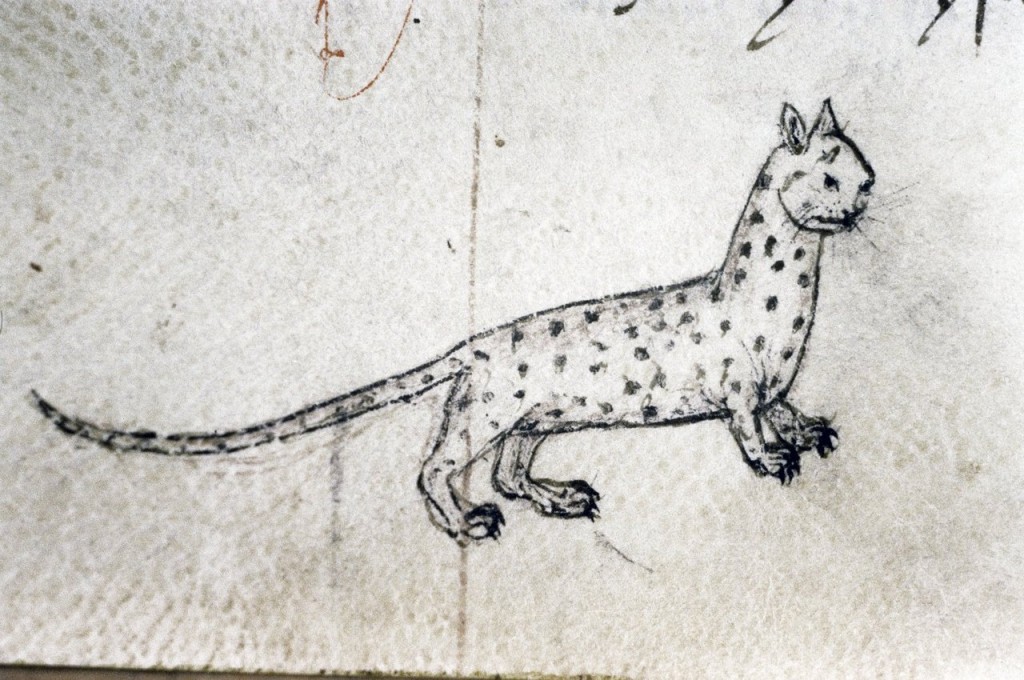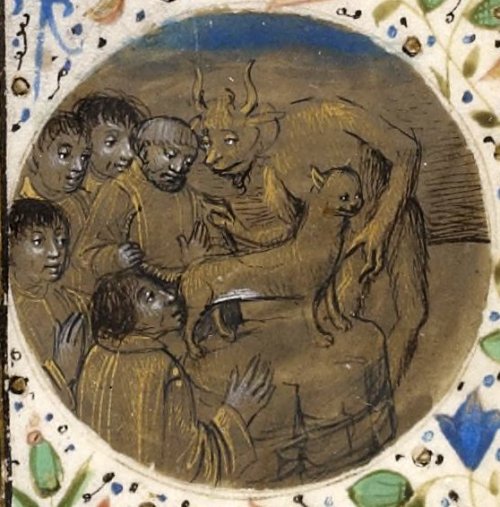Hating Medieval Cats #4: Waldensian Cats November 20, 2015
Author: Beach Combing | in : Medieval , trackbackAnother in our description of the cult of hate for medieval cats. The following text is anonymous and appeared in a fourteenth-century hand in MS Cotton Julius D, xi, fol. 84 r. It is short and it entitled Errores Valdensium, the Errors of the Waldensians. The Waldensians, for the uninitiated were a Christian sect that were born as a social movement in Lyons in the late twelfth century and that somehow, despite being classified as heretics, survived the middle age and made it through to the modern day (another post another day): there are still indigenous Waldensian communities in some parts of Piedmont. These proto-Protestants (a fair description) were naturally accused by inquisitors of being involved in nefarious deeds: after all they disagreed with the mother Church. The errors in this fourteenth-century (?) document include the claim that Rome was domus mendacii, the home of lies, something that Waldensians certainly said and repeatedly (and where they may have had a point). But they were also accused of more incredible things including employing a specially greased staff to fly to their religious gatherings. However, the most bizarre point in the document is the following.
Item in aliquibus aliis partibus apparet eis daemon sub specie et figura cati, quem sub cauda sigillatim osculantur.
And similarly in certain other parts the demon appears to them [Waldensians] in the shape and form of a cat, and they kiss the cat under the tail.
Here we return to the claims made against the Cathars in earlier texts visited on this blog, cat anus-kissing: it must also be remembered that in the early modern period, during the witch craze, kissing demons on the anus was seen as a part of the witch’s contract; just as flying on broomsticks was seen as a more general sign. We have here a simple convention that cats and heretics were associated: in other words if you were accused of being a heretic, sooner or later someone was going to accuse you of kissing mittens’ backside.
Beach has looked for an image of this in Google’s impressive collection of medieval jpegs. Surely somewhere on a manuscript page someone had a shifty looking man lifting a cat’s tail? Can anyone help: drbeachcombing At yahoo DOT com.
Also it might be noted that similar accusations were made against the Templars, who were, in their trials accused not only of worshiping the head of a man, but of worshiping cats.
22 Nov 2015: Southern Man offers this image. Looks promising
22 Nov 2015, MC writes in: I was reading your request about a picture of the osculum infame in a manuscript and I can confirm you there doesn’t appear to exist a manuscript image of this act. The earliest known (to me) images were lithographies used to illustrate the first (1608) edition of Guazzo’s Compendium Maleficarum. But in the Erlangener Ausgabe, Martin Luther describes a basorelief in the Wittenberg Stadtkirche which depicted a Jew lifting the tail of a sow and motioning as to kiss its anus. I say “depicted” because apparently this basorelief is lost: this could have happened at any time between the Schmalkaldic War (when the church was partially torn down to build an artillery emplacement) and the complete restoration carried out in 1811. I have no idea if said basorelief was just meant as a slander against Jews or represented the osculum infame itself (Jews being widely suspected of being sorcerers in league with the Devil themselves) so make of this what you want.
22 Nov 2015: Bruce T writes ‘Kissing the butts of cats. I wonder if these chroniclers ever spent time with domesticated cats instead of semi-wild farm cats? If you’ve ever owned a cat you know that one of their most endearing habits when laying beside, or on you, while being petted is to make a sharp turn, raise it’s tail and stick it’s butt in your face. (It’s why I have strict “no cats in the bed” policy.) Two, Muhammad was known to have kept cats as pets in his lifetime, and they’re an honored animal in the Muslim world. Influences from ‘evil’ cat loving Muslims and the old crones who often made up poultices and acted as midwives, that kept domesticated house cats (hovel cats?) would have been seen as dangerous things in the medieval European world.’




